Life Sciences News
See our Latest Journal Publications
Ash dieback: Insect threat to fungus-resistant trees
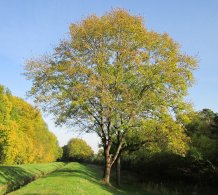 Ash trees which can resist the killer dieback fungus may be more vulnerable to attacks by insects, according to new research.
Ash trees which can resist the killer dieback fungus may be more vulnerable to attacks by insects, according to new research.
Scientists from the universities of Exeter and Warwick examined trees which are resistant to ash dieback and – unexpectedly – found they had very low levels of chemicals which defend against insects.
With efforts under way to protect ash trees from dieback, the scientists warn that selecting trees for fungal resistance could put them at risk from insects.
How viruses might influence estimates of global warming
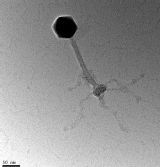 The tiniest life forms on Earth have a big impact on the way carbon dioxide is cycled between the atmosphere and the ocean, new research from the University of Warwick has found.
The tiniest life forms on Earth have a big impact on the way carbon dioxide is cycled between the atmosphere and the ocean, new research from the University of Warwick has found.
These life forms are viruses of some of the most abundant organisms on our planet: marine cyanobacteria.
The new research, Viruses Inhibit CO2 Fixation in the Most Abundant Phototrophs on Earth and published by Current Biology, demonstrates that the viruses of these cyanobacteria, cyanophages, use these genes to maintain the so-called “light-reactions” of photosynthesis, while shutting down the “dark-reactions”.
Cyanobacteria have had an incredible impact on the Earth by seeding the atmosphere with oxygen about 3 billion years ago, allowing for the existence of life as we know it. Today, this same process that acts to produce oxygen sucks up CO2 from the atmosphere.
Professor David Scanlan of the University of Warwick’s School of Life Sciences, the lead author of the research, said: “CO2 is a key greenhouse gas directly implicated in global warming. Given CO2 is converted into organic compounds during photosynthesis, factors that directly affect this process play a key role in modulating atmospheric CO2 levels.”
“We have known about these viruses for several decades” said Scanlan. “Things changed in 2003 when we discovered that these viruses have stolen genes from cyanobacteria that participate in photosynthesis. Now we have shown that these viruses modify photosynthesis during the demise of their host”.
On a global scale this results in losses of 0.02-5.39 Pg C yr-1 to viral induced inhibition of CO2 fixation. Per annum this upper figure is approximately 10% of the total CO2 fixed in the marine environment.
This data has important implications for measuring greenhouse gasses. Professor Scanlan explains:
“Quantification of net primary productivity is usually determined by directly measuring cyanobacterial photosynthesis and these methods rely on the coupling of light reactions to CO2 fixation”.
“In virus infected cells, this assumption of light reactions linked to CO2 fixation is incorrect and can therefore lead to a significant over estimation of CO2 fixation. This has very important implications for our understanding, and the estimates of, global warming.”
Contacts:
Professor Dave Scanlan
Email:
Tel: + 44 24 76 528363
Dr Andrew Millard
Email: Andrew.Millard@warwick.ac.uk
Tel: + 44 24 76 523589
Plants remember stress to help protect themselves
A new generation of plants better adapted to mitigate the effects of environmental change could be created following a fundamental step towards understanding how plants are able to retain a memory of stress exposure.
The research, led by Dr Jose Gutierrez-Marcos and published in the journal eLife, provides the first compelling evidence that plants have evolved ways to remember previous exposures to stress, in this case high salinity conditions, which can help subsequent progenies withstand the same stress in future.
SLS authors publish new edition of 'Introduction to Modern Virology'
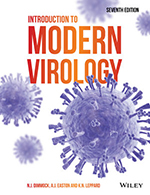 The new 7th edition of the popular textbook ‘Introduction to Modern Virology’ is published today.
The new 7th edition of the popular textbook ‘Introduction to Modern Virology’ is published today.
First published in 1974, this was one of the first textbooks in the field of virology. Authored by academics from the School of Life Sciences, the purpose of the book was and remains to provide a clear and comprehensive coverage of virology at a level accessible for undergraduates. It provides a broad introduction to virology, which includes the nature of viruses, the interaction of viruses with their hosts and the consequences of those interactions that lead to the diseases we see.
The latest edition, authored by Professor Nigel Dimmock, Professor Andrew Easton and Dr Keith Leppard, has been updated throughout to cover the ever growing subject area. The book includes new chapters focusing on the economic impact of virus infections and the impact that viruses have on the planet.
The text provides ideal reading for students in biology and medicine wishing to study virology.
Dr Leppard said, “the book underpins teaching of the subject to our undergraduates in Medical Microbiology and Virology, and Biomedical Science.”
Related links:
Introduction to Modern Virology, 7th Edition
BSc Biomedical Science
BSc Medical Microbiology and Virology
GARNish newsletter puts spotlight on plant science at Warwick
 The latest GARNish newsletter highlights plant science in Life Sciences, profiling the work of our academics.
The latest GARNish newsletter highlights plant science in Life Sciences, profiling the work of our academics.
'Plant science research at the University of Warwick is characterised by the breadth of expertise - from fundamental molecular mechanisms to projects with direct application to industry. We have world-class basic science in signalling, gene regulation, development, plant– environment (microbes, virus, soil) interactions, and evolution through to pest management, crop genetics and genomics underpinning the development of new varieties.'
Read the newsletter (pdf)
Sedimentary DNA from a submerged site reveals wheat in the British Isles 8000 years ago
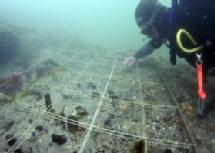 A research team led by Dr Robin Allaby of the School of Life Sciences has found evidence of wheat reaching Britain 2000 years before the arrival of farming in the UK.
A research team led by Dr Robin Allaby of the School of Life Sciences has found evidence of wheat reaching Britain 2000 years before the arrival of farming in the UK.
This has a significant impact on our understanding of Britain in pre-Neolithic times, indicating that the ancient British were not cut off from mainland Europeans on an isolated island 8,000 years ago as previously thought with the most plausible explanation for the wheat reaching the site being the existence of social and trade networks. It is thought that these networks might have been assisted by land bridges that connected the south east coast of Britain to the European mainland, facilitating exchanges between hunters in Britain and farmers in southern Europe.
Evidence for a variety of wheat known as Einkorn was found from sedimentary DNA at a submerged archaeological site off the south coast of England (picture above by Roland Brookes, The Maritime Archaeology Trust).
The research work was completed in collaboration with co-leads Professor Vincent Gaffney of the University of Bradford and Professor Mark Pallen of Warwick Medical School, the Maritime Archaeology Trust, the University of Birmingham and the University of St. Andrews.
This research has been published in the academic journal Science, February 2015
More Information
Focus on naturally occurring protein to tackle dementia
Researchers led by Dr Sonia Correa have provided the first evidence that the lack of a naturally occurring protein is linked to early signs of dementia.
Published in Nature Communications, the research found that the absence of the protein MK2/3 promotes structural and physiological changes to cells in the nervous system. These changes were shown to have a significant correlation with early signs of dementia, including restricted learning and memory formation capabilities.
Bloodsucking mite threatens UK honeybees
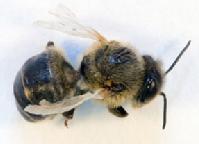 A study led by Professor David Evans has discovered how a bloodsucking parasite has transformed Deformed Wing Virus (DWV) into one of the biggest threats facing UK honeybees.
A study led by Professor David Evans has discovered how a bloodsucking parasite has transformed Deformed Wing Virus (DWV) into one of the biggest threats facing UK honeybees.
The paper "A Virulent Strain of Deformed Wing Virus (DWV) of Honeybees (Apis mellifera) Prevails after Varroa destructor-Mediated, or In Vitro, Transmission" is published in PLoS Pathogens.
The project is part of the Insect Pollinators Initiative, jointly funded by the Biotechnology and Biological Sciences Research Council (BBSRC), Defra, the Natural Environment Research Council (NERC), the Scottish Government and the Wellcome Trust under the auspices of the Living with Environmental Change (LWEC) partnership.

Life Sciences researchers feature in scientific video journal
Sophie Piquerez, Alex Jones and Vardis Ntoukakis describe a protocol for the purification and characterization of plant protein complexes in the latest Journal of Visualized Experiments (JoVE) video. Using Nicotiana benthamiana and the tomato Prf/Pto complex as a model, they demonstrate that by immunoprecipitating a single protein within a complex, they can identify its post-translational modifications and its interacting partners.
